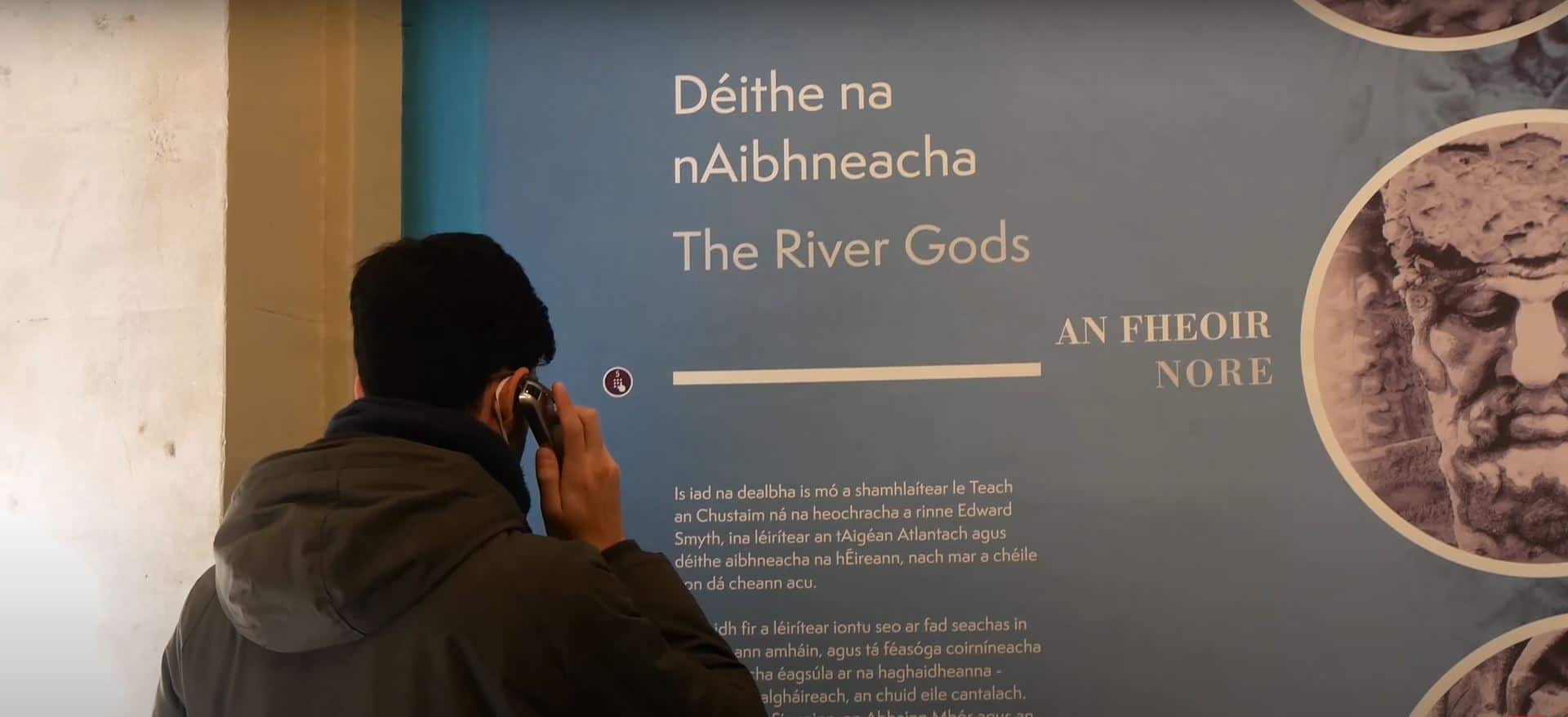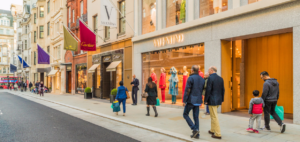The Custom House | Dublin, Ireland

Updated On: February 26, 2024 by Ahmed Samir
Dublin, Ireland’s capital city, is renowned for its rich history, vibrant culture, and architectural treasures. Among its many historic landmarks, the Custom House stands tall and proud along the banks of the River Liffey, a symbol of Dublin’s past and a testament to its enduring architectural beauty. This article will delve into the history, significance, and architectural splendour of the Custom House in Dublin, Ireland.
The Custom House’s Historical Significance
The Custom House, often called “Teach a Chustaim” in Irish, has been pivotal in Dublin’s history since its construction in the late 18th century. It was designed by the eminent architect James Gandon and built between 1781 and 1791. The purpose of the building was to centralize customs operations, creating a more efficient system for collecting duties and taxes on imported and exported goods. This move aimed to bolster Ireland’s economic prosperity during a burgeoning trade and financial growth period.
Architectural Grandeur
One of the Custom House’s most striking features is its neoclassical architecture, a style in vogue during the late 18th century. James Gandon drew inspiration from the great architecture of ancient Rome and Greece, incorporating classical elements such as Doric columns, pediments, and symmetrical design into the building’s facade.
The exterior of the place is built from Portland stone, which gives the structure a timeless and elegant appearance. Its imposing façade features a central portico with six colossal Ionic columns supporting a triangular pediment adorned with intricate relief sculptures. The allegorical figures on the pediment represent various aspects of Ireland’s economic and maritime heritage, symbolizing the nation’s reliance on trade and industry.
The attention to detail in the Custom House’s design is nothing short of exceptional. The building is adorned with ornate friezes, carved rosettes, and delicate mouldings. Combining these elements showcases the skilled craftsmanship of the artisans involved in its construction.
A Symbol of National Pride
The Custom House has always held a special place in the hearts of Dubliners and Irish nationals. Beyond its practical function, it symbolised Ireland’s aspirations for independence and self-determination. During the early 20th century, as Ireland moved closer to independence from British rule, the Custom House became a focal point for nationalist sentiments.
In 1921, the place was the scene of a dramatic event during the Irish War of Independence. A group of anti-Treaty forces set fire to the building, causing extensive damage. Some saw this act of destruction as a symbolic attack on British rule and a statement of Irish resistance. While the fire damaged the interior and destroyed many valuable records, the exterior structure remained largely intact.
After the Irish Civil War and the establishment of the Irish Free State in 1922, efforts were made to restore and rebuild the Custom House. This restoration work aimed not only to repair the physical damage but also to reaffirm its role as a symbol of national pride and a testament to the resilience of the Irish people.
The Custom House Today
Today, the Custom House is fully restored to its former glory and serves as a government office building. It houses various departments, including the Department of Housing, Local Government, Heritage, Agriculture, Food, and the Marine. While the Custom House may no longer function as the primary centre for customs operations, its historical significance and architectural splendour make it a must-visit tourist attraction and a point of pride for the people of Dublin.
Visitors to the Custom House can explore its exterior, which is accessible to the public, and marvel at its neoclassical beauty. The meticulously landscaped gardens surrounding the building provide a tranquil oasis in the city’s heart, making it an ideal spot for a stroll or a moment of reflection.
Guided Tours and Exhibitions
Guided tours and exhibitions are available for those interested in delving deeper into the history and significance of the Custom House. These experiences offer a comprehensive look at the building’s past, its role in Irish history, and the architectural genius of James Gandon.
Visitors can explore the Custom House’s interiors and view its Rotunda’s grandeur, where they can appreciate the intricate plasterwork and majestic chandeliers. The Rotunda is often used for official ceremonies and events, adding to its sense of prestige and importance.
The Custom House: A Venue for Art and Culture
In addition to its historical significance, the Custom House has also promoted art and culture in Dublin. The venue occasionally hosts exhibitions and cultural events, making it a versatile space that continues to contribute to the city’s cultural scene.
The Custom House’s proximity to the River Liffey offers a picturesque setting for visitors and photographers alike. The reflections of the building in the tranquil waters of the river create a stunning visual spectacle, especially during sunrise and sunset.
Exploring Dublin’s Rich Tapestry of History and Culture Near the Custom House
Dublin is a city rich in history and culture, and there are many attractions near the Custom House that you can explore to make the most of your visit. Here are some notable ones:
- EPIC The Irish Emigration Museum: Located just a short walk from the Custom House, this museum offers a fascinating journey through the history of Irish emigration, highlighting the stories of the millions of people who left Ireland and made their mark worldwide.
- Jeanie Johnston Tall Ship and Famine Museum: This replica of a 19th-century emigrant ship is docked nearby on the River Liffey. Visitors can tour the ship and learn about the harrowing experiences of Irish emigrants during the Great Famine.
- Trinity College Dublin: Home to the famous Book of Kells and the Long Room Library, Trinity College is a prestigious university with a rich history. It’s a short walk from the Custom House and offers a glimpse into Ireland’s academic and cultural heritage.
- Dublin Castle: Located on Dame Street, Dublin Castle is an iconic historical site. While you may not find a traditional castle, the complex includes beautiful gardens, the Chester Beatty Library, and the State Apartments, which showcase Ireland’s political and cultural history.
- Christ Church Cathedral: One of Dublin’s oldest buildings, Christ Church Cathedral is a stunning example of medieval architecture. Explore its interior and climb the bell tower for panoramic city views.
- St. Patrick’s Cathedral: This magnificent cathedral is another Dublin landmark and is said to be the final resting place of St. Patrick himself. The interior is adorned with beautiful stained glass windows and intricate stone carvings.
- Dublinia: Located beside Christ Church Cathedral, Dublinia is an interactive museum that takes you back to Viking and medieval Dublin. It’s a great place to learn about the city’s early history.
- Temple Bar: Just across the river from the Custom House, Temple Bar is Dublin’s cultural quarter, known for its vibrant nightlife, arts scene, and charming cobblestone streets. It’s an excellent place to explore pubs, galleries, and street art.
- The GPO Witness History Museum: Located on O’Connell Street, this museum offers an immersive experience that tells the story of the 1916 Easter Rising and the birth of modern Ireland. The General Post Office itself is a historic building worth admiring.
- Dublin’s Docklands: The Custom House is in the heart of Dublin’s Docklands, a rapidly developing area filled with modern architecture, offices, and cultural attractions. You can stroll along the scenic River Liffey and enjoy the views of contemporary buildings and public art installations.
- National Gallery of Ireland: A bit farther from the Custom House but still within walking distance, the National Gallery houses an impressive collection of Irish and European art, including works by famous artists such as Caravaggio, Vermeer, and Monet.
These attractions, located near the Custom House in Dublin, offer a diverse range of experiences, from exploring history and culture to enjoying the city’s vibrant atmosphere. Whether you’re interested in museums or historical sites or simply soaking up the local ambience, there’s something for everyone in Dublin’s city centre.
Conclusion
The Custom House in Dublin, Ireland, is more than just a government office building. It is a testament to Ireland’s history, resilience, and architectural prowess. From its neoclassical splendor to its enduring role as a symbol of national pride, the Custom House holds a special place in the hearts of Dubliners and visitors alike.
A visit to the Custom House allows one to appreciate not only its architectural beauty but also the rich history and cultural significance it represents. As Dublin continues to evolve and grow, the Custom House stands as a timeless reminder of the city’s past and its bright future. Whether you’re a history enthusiast, an architecture lover, or simply a tourist looking to explore Dublin’s treasures, the Custom House is a must-see destination that will leave you in awe of its grandeur and historical importance.
FAQs
Is the Custom House open to the public?
While the interior of the Custom House primarily serves as a government office building, the exterior is open to the public, and guided tours are available for those interested in exploring its history and architecture.
Is there a gift shop or souvenir store at the Custom House?
The Custom House does not have a gift shop, but you can find gift shops and souvenir stores in nearby attractions like EPIC, The Irish Emigration Museum and Trinity College Dublin.
How long does a guided tour of the Custom House typically last?
Guided tours of the Custom House usually last 45 minutes to an hour, providing visitors with insights into its history, architecture, and significance.






